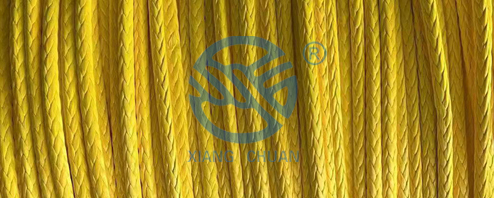kami adalah industri

Mooring tails are an essential component of any mooring system as they play a crucial role in ensuring the stability and security of a vessel while it is moored. In this article, we will dive deeper into mooring tails, their function, and the various types available in the market.
Mooring tails, also known as pennants or tail lines, are ropes or cables that are attached to the anchor chain or the mooring buoy on one end and to the vessel on the other end. They are designed to absorb the shock and tension that occurs when the vessel is subjected to wind, waves, and currents while moored. By distributing this load away from the anchor chain or the mooring buoy, mooring tails help prevent damage to the vessel and the mooring system.
One of the primary functions of mooring tails is to provide elasticity to the mooring system. When a vessel is moored, it is subjected to various forces such as wind and waves, which can cause it to move relative to its mooring point. Mooring tails act as shock absorbers by stretching and contracting, thus reducing the impact of these forces on the vessel and the mooring system. This elasticity also helps to dampen the motion of the vessel, making it more stable and secure while moored.
In addition to providing elasticity, mooring tails also help to reduce the load on the anchor chain or the mooring buoy. By absorbing and distributing the force exerted on the vessel, mooring tails help to prevent excessive strain on the mooring system, which can lead to fatigue and failure of the components. This is especially important in areas with strong currents or rough seas, where the forces acting on the mooring system can be significant.
There are several types of mooring tails available in the market, each designed for specific mooring applications. The most common types include synthetic ropes, wire ropes, and chain tails. Synthetic ropes, such as nylon or polyester, are lightweight and highly elastic, making them ideal for use as mooring tails. Wire ropes are stronger and more durable than synthetic ropes, but they are less elastic and may require additional shock absorbers. Chain tails, on the other hand, are made of chain links and are extremely strong and durable, making them suitable for heavy-duty mooring applications.
When selecting a mooring tail, several factors should be considered, including the size and weight of the vessel, the water depth, the mooring location, and the environmental conditions. It is essential to choose a mooring tail that is strong enough to withstand the forces acting on the vessel while providing the necessary elasticity and shock absorption. Regular inspection and maintenance of mooring tails are also crucial to ensure their effectiveness and prevent failure.
In conclusion, mooring tails are an essential component of any mooring system, providing elasticity, shock absorption, and load reduction to ensure the stability and security of a vessel while moored. By understanding the function of mooring tails and selecting the appropriate type for specific mooring applications, vessel operators can enhance the safety and efficiency of their mooring operations. Remember, the key to a successful mooring lies in the strength and reliability of the mooring tails.
Alamat:
Jalan Chengnan No.8, kawasan industri chengnan, daerah Baoying, Jiangsu Cina
Surel:
E-mail1:vanzer@xcrope.com Vanzer Tao
E-mail2:sales@xcrope.com Wang Peng
E-mail3:grace@xcrope.com Grace Li
E-mail4:info@xcrope.com David Cheng
Telepon perusahaan:
+86-514-88253368
Departemen penjualan luar negeri:
+86-514-88302931



Hak Cipta Oleh © Jiangsu Xiangchuan Rope Technology Co., Ltd. | Seluruh hak cipta